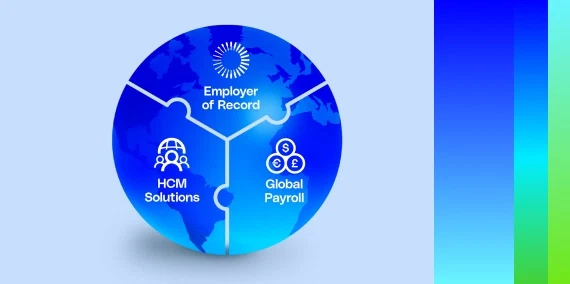Remote work is here to stay. Many companies are operating effectively from sofas around the world, and a global preference for home offices over long commutes has come to the forefront. Even people who thrive in buzzing office buildings are admitting they want the flexibility to choose.
Now that companies are looking at remote work as a long-term strategy rather than a short-term necessity, HR teams have been charged with the most important task of all: setting their workforce up for success, regardless of their location.
From HCM vendors to recruitment companies, the HR world is working to find efficiencies in processes and enable companies to stay asset light while remote. How can company leaders adopt an asset light approach, while growing rapidly in the new world of remote work?
What does it mean to be asset light?
Asset light business models gained popularity among high growth, lean asset startups around 2010 with the emergence of the gig economy. For example, it led Uber to scale to 100x the size of taxi companies. In the current remote work environment, an asset light model means hiring team members around the world without having the traditional infrastructure – an entity, a team for HR, accounting, finance and legal support, or even a physical office.
Is the asset light model right for your remote teams?
In most cases, employees value stability and fair employment contracts. It’s likely harder to find success without full-time, engaged team members with comprehensive benefits – which vary widely by country. For this reason, stable employment is preferable over being an independent contractor who earns according to how many deliveries he or she makes.
Today, there are ways to offer the benefits of full-time employment without investing in the traditional infrastructure setup needed to make that possible. In addition, adopting an asset light approach isn’t just about physical assets – there are other ways to adopt asset light principles and incorporate them into your everyday work life.
[bctt tweet=”Today, there are ways to offer the benefits of full-time employment without investing in the traditional infrastructure setup needed to make that possible.” username=”globalpeo”]
Here are three asset light strategies that I’ve seen successful leaders implement in their companies, especially in newly remote workplaces.
Here are 3 ways to incorporate asset light principles into your remote teams:
1. Rethink your view of your remote team’s time.
The knee-jerk reaction for knowledge-based companies who suddenly went remote in 2020 was to substitute all in-person meetings with videoconferences, including virtual happy hours, digital all-hands, and dial-in standups. After several months of remote work, many professionals know these are not always beneficial, but they might attend out of obligation or fear of missing important communications.
Video calls are not the enemy, however. Instead of everyone joining the all-hands via conference rooms, at Globalization Partners everyone now joins from their own computer. Seeing everyone’s face individually in their own video box is extremely democratizing and brings us all closer. It’s a case of finding the balance and listening to your employees’ needs.
At Globalization Partners we also implemented a global learning system in 2020 for our new hires. This process saved hiring managers hours of calls, during which they would have previously explained internal policies and corporate culture.

A recruit’s first week at a new company is so important and, with some of the onboarding being automated, our hiring managers were gifted more time to provide targeted training and to be well-rested mentally for their new team members. Automating certain parts of onboarding also limits the need to build enormous teams of onboarding specialists that report into HR, keeping your company asset light.
Ask yourself and your teams:
- How many of these meetings do we actually need?
- Is it clear to my teams which meetings are obligatory, and which are optional? Does this always translate, bearing in mind how culture impacts interpretations of communications?
- Could we promote an asset-light approach to time management?
Note that corporate messages are not received in the same way around the world. While some cultures value direct communication, others may take offense to such an approach. When building global teams, remote or not, remember to adapt your communications for all the countries you’re working in, and call on your local teams to share honest appraisals of the usefulness of meetings.
2. Remote work ups productivity; choose carefully between more people or automation.
Many companies are just as effective, if not more effective, while working remotely. Independent of the pandemic, Aon Consulting reported that companies see 43 percent higher productivity in remote teams. Even during the global lockdown — while parents were simultaneously child rearing and working full-time, many professionals were caring for relatives, and most of the population was navigating spotty WiFi — these numbers were surpassed in 2020. Of executives surveyed by PwC about their remote teams, 52 percent said that average employee productivity had improved in December 2020, up from 44 percent in June.
[bctt tweet=”Independent of the pandemic, Aon Consulting reported that companies see 43 percent higher productivity in remote teams.” username=”globalpeo”]
The numbers are astounding for a pandemic-struck workforce. They should also give companies the confidence they need in their teams to look further afield for great employees. Hiring internationally allows leaders to diversify their business as well as their teams, and to either tap into lower cost jurisdictions or find great candidates who can cover multiple company needs. This translates into cost-efficiencies and facilitates asset light, global team growth.
Ask yourself and your teams:
- Do you need more people or do your people need better processes? What technology might set them up for success?
- Could your existing international teams be better supported by more hires in their market, rather than at HQ?
- Have you explored new markets and expansion following an asset light model?
The pursuit of asset light business might not even require new hiring. For example, if your HR teams are managing multiple people around the world in different cultures with varying local legislations, are they using their time efficiently to adapt to each professional’s locality? Leaders should take advantage of the remote way of working to implement processes that make team management smoother and lighten the load on international HR teams.
3. Consider new locales and alternatives to international entity setup.
Some leaders will skip over workforce planning entirely, but any seasoned executive or HR professional knows how important this planning is in encouraging decisions that leaders might not have even considered otherwise. Before diving into team expansion, ask yourself if your hiring strategies, talent search, and team growth need to be revamped to suit remote work. Especially if you’re open to hiring around the world and have international entities or an Employer of Record on hand to do so smoothly, it’s worth researching emerging talent hubs in different jurisdictions.
If your aim is to go asset light, but not necessarily people light, hiring in less expensive countries can allow you to provide competitive salaries and benefits that engender employee loyalty, while also obtaining skilled workers. Countries around the world are structuring themselves as cost-effective finance, service, and technology hubs.
Ask yourself and your teams:
- Which roles do we still need now that much of the business world is online?
- What new roles should be created to fill long-term gaps in our business, if we stay remote?
- How do my people feel about their current teams and division of responsibilities?
- Have we explored all the potential hubs for great hires around the world?
- Do we have a balanced workforce in terms of age, gender, race, and nationality?
If your answer to the last question is “no,” remote work has created an opportunity to change that. Diverse teams are proven to be more resilient, and in many countries around the world, women were hardest hit by job loss. Companies have an opportunity to increase female representation given the greater pool of candidates.

In fact, the number of global job searchers has skyrocketed: 33 million people entered unemployment in 2020 and 81 million were forced into inactivity. On the flip side of this devastating reality for professionals is an enormous choice of international candidates for growing companies.
As you plan out your global remote teams, think differently about candidates and what you are looking for in a role, so you can dip into this incredible talent pool. A global Employer of Record allows you to hire seamlessly, wherever the talent is located – no entity setup required.
To augment what you do in a way that meets your hiring needs with an Employer of Record, Globalization Partners’ end-to-end solution is designed to make international team hiring and management seamless for growing companies – the best way to keep your global HR workload as light as your new business model.
Why are remote teams good for asset light models?
Today, companies are hiring irrespective of location, which allows them to expand their businesses globally and select the best candidate for the job. Remote work also gives recruiters a greater number of applicants to choose from, especially if they’re willing to look beyond local candidates.
As a leader or HR professional, how can you hire intelligently and in line with company growth to avoid over- or under-burdening your teams with work? The traditional “asset heavy” way of hiring team members in a new country is a burden on your team and on your balance sheet. Utilizing an asset light model to compliantly hire team members around the world gives you an edge against your competition, access to the world’s best talent, and it allows your company to stay nimble in an ever-changing world.







